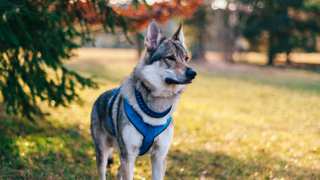The Saluki diet will need to include animal proteins, carbs, vitamins, minerals, and omega fatty acids--nutrients every dog needs to maintain its health in the long term. This means the best Saluki food is premium dry kibble, as it has balanced portions of the above-listed ingredients.
These dogs will do best with food formulated for active breeds. Royal Canin, SportMix, and Dr. Tim's are three recommended brands that carry excellent lines of high-energy premium food. And Salukis can be picky eaters, so owners may need to try several different kinds before finding one their dogs will enjoy.
Adult Salukis, depending on their age, size, and activity levels, will need about three cups of dry food per day, divided into two meals. Saluki puppies will need a bit less: depending on age, about 1¾ cups per day, divided into three meals (not two) until six months old.
For more info on feeding a Saluki from puppyhood through maturity, see this Saluki feeding chart:
Dog AgeDog WeightFood TypeAmountFrequency2 Months7 lbsDry (Puppy formula)0.25 cups3x/day3 Months12 lbsDry0.33 cups3x/day6 Months25 lbsDry0.6 cups3x/day9 Months35 lbsDry* (Puppy/Adult)1 cup2x/day12 Months45 lbsDry (Adult formula)1.25 cups2x/day14 Months+50 lbsDry1.5 cups2x/day*--Around this time, transition to adult food by mixing in adult formula with the puppy formula, in slowly increasing amounts, for one week.
Try if possible to stick to the above listed portions. Salukis are not prone to obesity at all--but if constantly overfed (and under-exercised), they can become unhealthy and out of shape. Help keep your Saluki in top physical condition by having consistent feeding and exercise schedules, by not feeding the dog table scraps, and by not leaving food in the dog's bowl all the time.





